Melbourne Beach Florida Photos
Photos from a beautiful community located between the Atlantic Ocean of the World and the Indian River of Florida
Melbourne Beach is a beach community lying between the India River to the west and the Atlantic Ocean to the east. Primarily a residential community supporting a variety of family styles—singles, young families and snowbird retirees—many houses are available for seasonal short-term rentals. Melbourne Beach sits on a stretch of the U.S. East Coast where loggerhead sea turtles nest and hatch from March through October. Surf fishing and surfing are popular throughout the year. The weather is hot and humid in Summer and cooler and humid during the other seasons. All around, Melbourne Beach has a pleasant climate. While some say, the beach is too hot, that is the point of lemonade and iced tea.
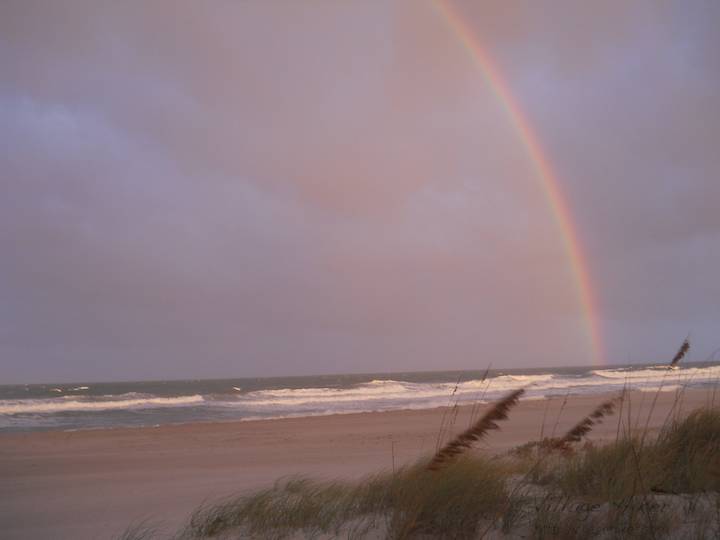
A rainbow sinks into the sea during a sun-lighted sprinkle over the Atlantic Ocean at Melbourne Beach, Florida. Rainbows show off the entire color spectrum by refracting sun light into the sky. This rainbow lasted about 20 minutes. From the point of the photograph, the horizon was sightly more than three miles--just under five kilometers--distant. You can make your own rainbow by spraying finely dispersed water into the air on a sunny day.
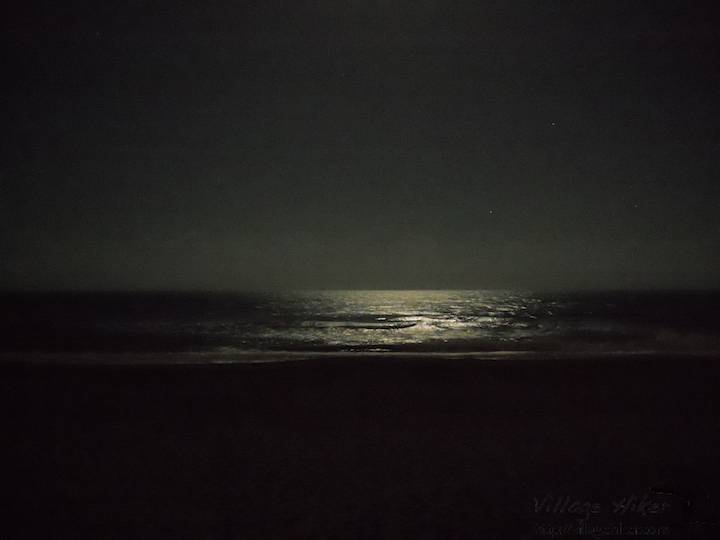
A full moon lights the Atlantic on 25 October 2010 at 9:06:20 pm EST, visible from the public boardwalk at Melbourne Beach, Florida. With this shot, a Nikon CoolPix L22 proves it can take "good enough" pictures in low light when held perfectly still. The sky shows some noise, while the ocean appears smoother than reality because of the long timing of the photo.
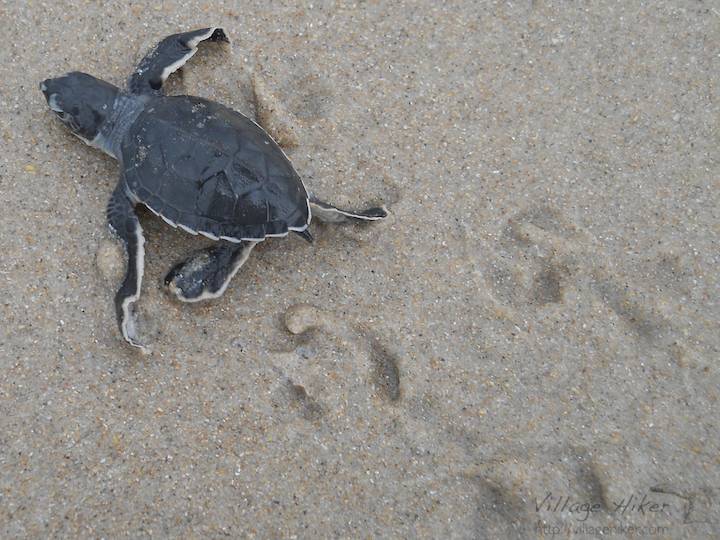
On 7 November 2010, a lone baby loggerhead sea turtle heads across Melbourne Beach toward its first swim in the Atlantic Ocean. This late bloomer may be the last to go, as the nesting and hatching season is 1 March through 31 October. During these months, beach visitors can see the wide tracks where parent turtles move during the night. Regulations protect this endangered species by prohibiting tampering with turtles and their nests, including the shining of any type of artificial lights--flash lights to residential lighting--at night. Guided tours are available at night from the Sea Turtle Preservation Society in Indialantic, Florida, just north of Melbourne Beach. http://www.seaturtlespacecoast.org/ About 10 seconds after the shooting of this photo, the turtle was home.
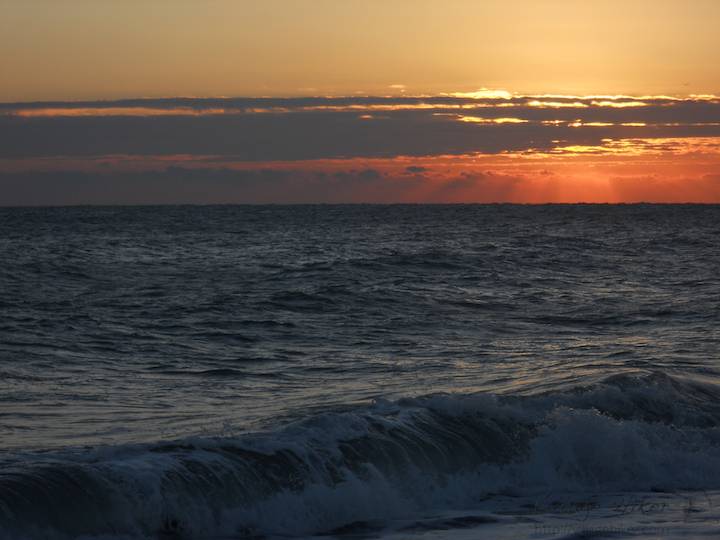
The morning sun sets the clouded sky on fire above the dark and churning white-tipped blue of the Atlantic Ocean shoreline near Melbourne Beach, Florida. The condensed water particles in the lower atmosphere over the ocean break the sun into colors. The red color results from reflection and refraction of sun light passing through the atmosphere and touching the clouds.
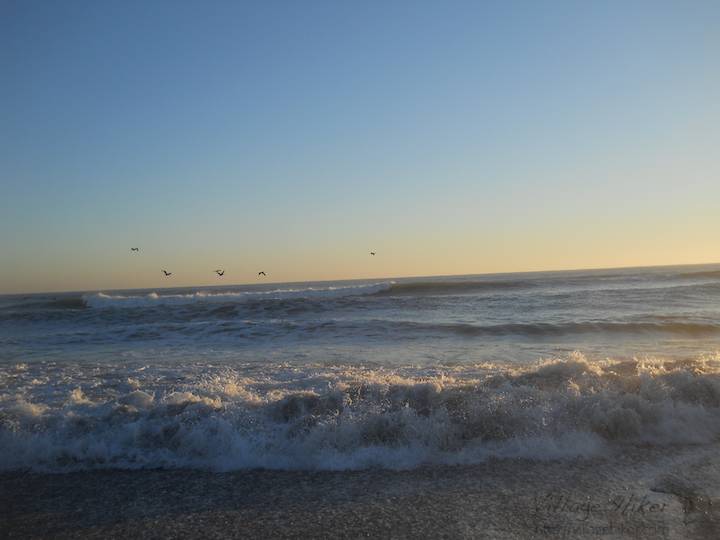
Pelicans fishing just off the Atlantic Ocean shoreline near Melbourne Beach, Florida, mark an area ready for line and bait. A dozen or so fishers come daily to the surf to snag redfish, bluefish and whitings for breakfast, lunch or dinner. Licensed by the state, the fishers often use two or three poles, casting each then placing them upright into a sand stand--watching the lines for signs of a catch.
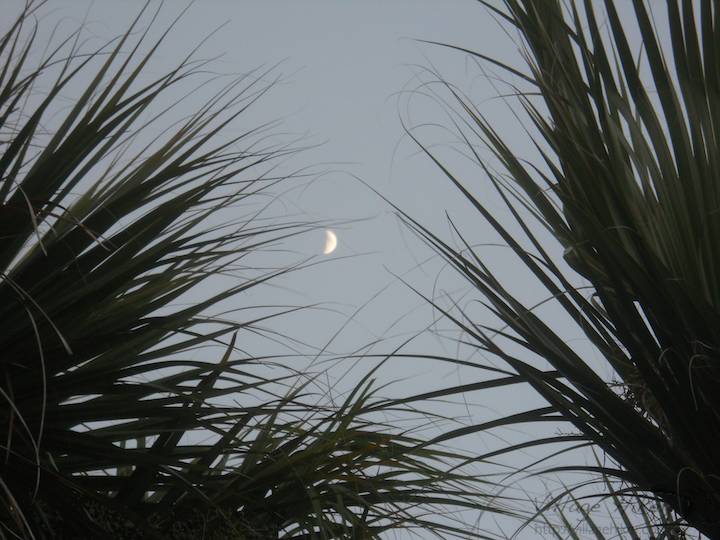
Palm fronds frame a late afternoon moon near the Atlantic Ocean at Melbourne Beach, Florida. The dominate tree in this part of the Sunshine State, palms show up in multiple varieties, providing uniquely different scenery morning, afternoon and night.
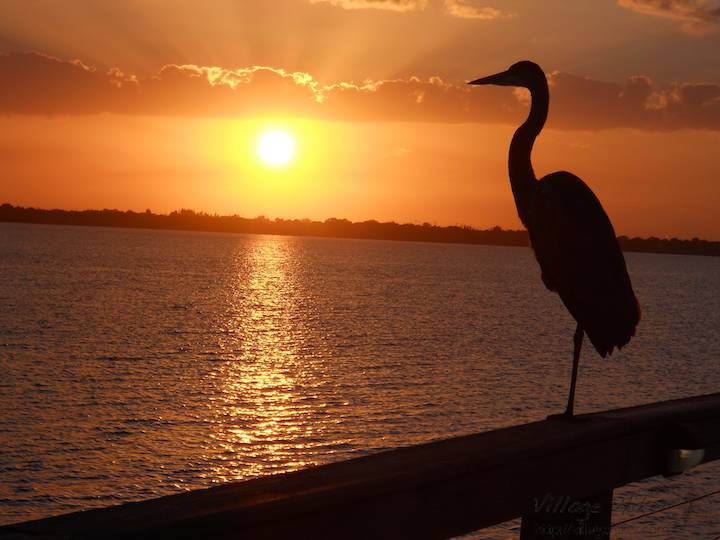
A heron watches the sun set over the Indian River while resting on the public pier at Melbourne Beach Florida. The heron sat most motionless for 15 or more photos, shuffling its feathers slightly one time to express concern at the closing distance between bird and photographer. One step back calmed its mind. Soon, it soared down, then up and away as a heavy-steeping newcomer approached too quickly. Smart fowl.
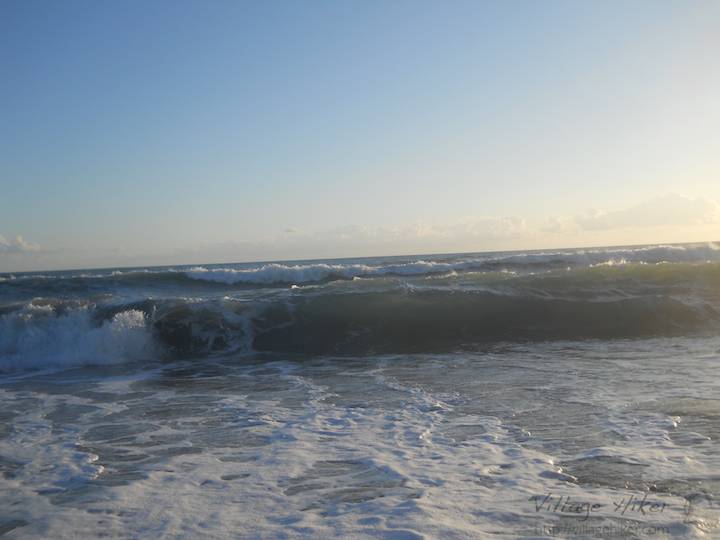
Looking out from the beach at sea level--just for fun, try to achieve a consensus definition of sea level--make it a goal to raise the camera higher just after taking the shot of the incoming surf. Because the ocean is like junior high--expect the unexpected--this sometimes fails. While this photo is sort of cool, check out the next one. Together, they capture the surf as the surf captures the camera on the beach at Melbourne Beach, Florida. The next one also explains how to recover the camera.
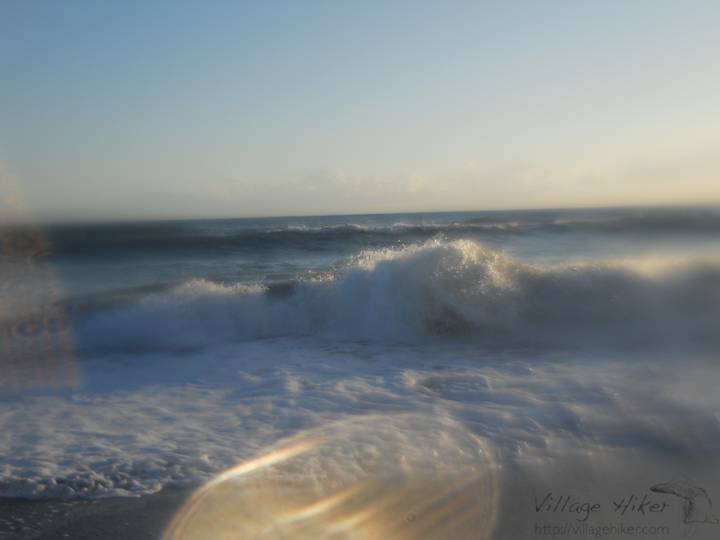
While water in the lens creates an nice mysterious look, it can damage or destroy a camera--in this case a Nikon Coolpix L22. When this happens shut off the camera by removing the batteries. Doing this keeps the lens extended and the lens cover open. Next, wipe off as much moisture as you can. Finally hang the camera from its strap where air can circulate all around. After a day or two--or maybe a week--when you can see no moisture in the lens, reinstall the batteries and see what happens. In this case, the Nikon L22 was fine. Too see how this happened, visit the previous photo.

While most people know limes are green, genuine key lime pie is yellow--colored by the hue, saturation and brightness of its tree-ripened major ingredient. A native of Southeast Asia--okay, name all of the fruits not native to this part of the world--the key lime migrated to the Florida Keys--courtesy of Spanish explorers. A rich dessert, one piece sometimes calls for sharing with two forks. Beach Street Eatery in Melbourne Beach, Florida, makes excellent key lime pie from scratch.
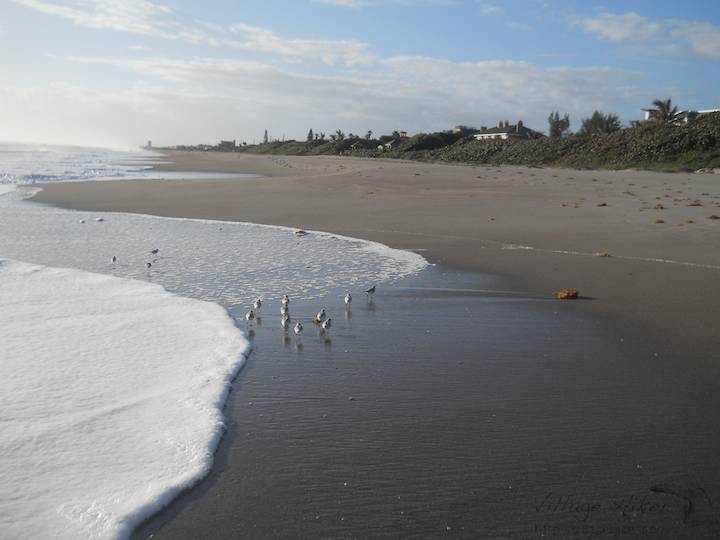
Difficult to clearly identify, these small birds are more than likely Least Sandpipers, most diminutive of the shoreline wading birds. While large sandpipers wade in the waves and foam, these small ones consistently run from the water. Beach walkers can often predict the reach of incoming waves by watching how fast and far these fliers run with each new whoosh of the surf. Between waves, they race back toward to sea to feed on tiny sand crabs burrowed in the sand. They fly only when extremely agitated and then only for short distances. These Least Sandpipers on feeding near the surf at Melbourne Beach, Florida.
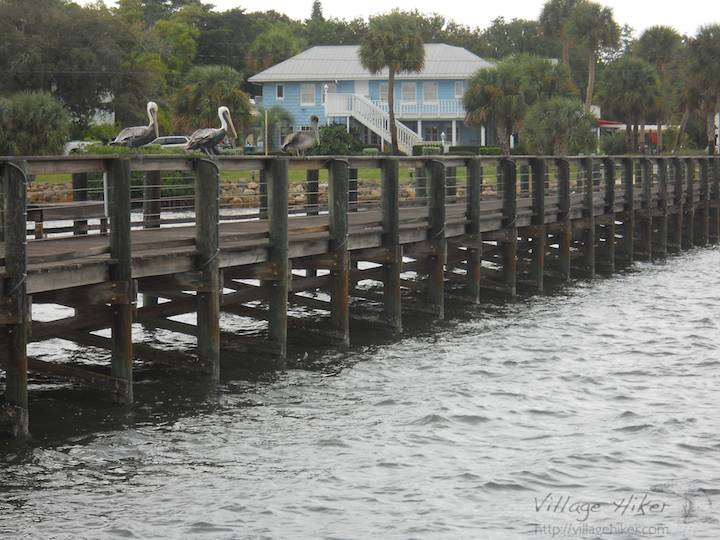
Three pelicans hang out on the public pier over the Indian River at Melbourne Beach, Florida. Besides feeding, mating and flying for fun, pelicans like to rest on stable platforms and watch the water go by. Melbourne Beach sits between the Indian River and the Atlantic Ocean about 45 minutes south of Cape Canaveral, the major launch point of the United States space program. The Indian River is an estuary, where fresh water meets salt water.
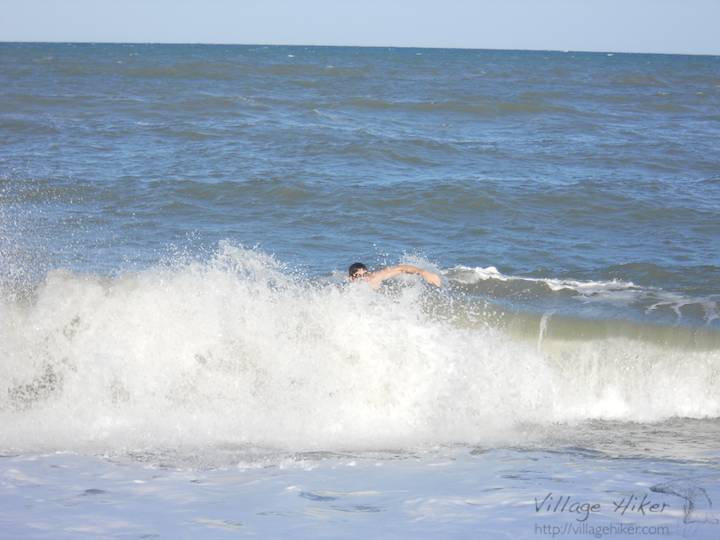
A swimmer heads home pushed by the waves as they wash inward from the Atlantic Ocean at Melbourne Beach, Florida on 10 October 2010. October is still good swimming weather, although the water can be cold and riptides strong.
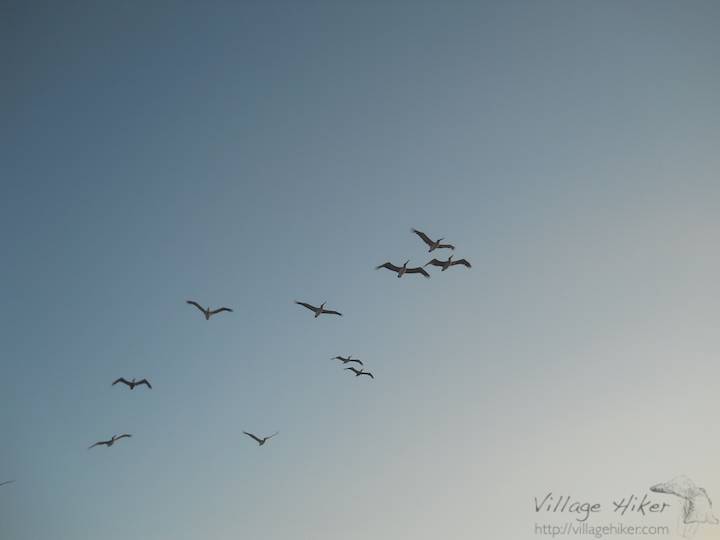
Ten pelicans head north over Melbourne Beach, Florida. Surf fishers watch for pelicans feeding just off the coast to locate the current hot areas for catching bluefish, redfish, whitings and others. Whimsical in appearance, pelicans sometimes stand within several yards of people while both watch the surf. While some people say pelicans mate for life, others believe the bonds last only for the mating season of each year.
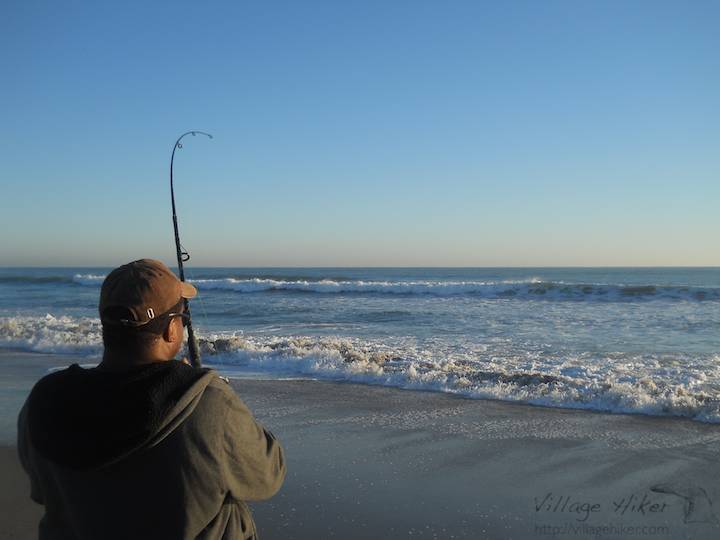
On a cool fall morning, a surf fisher plays with a bluefish near Melbourne Beach, Florida. Lightly spaced along the beach, fishers cast live bait, cut bait and artificial lures into the surf--determining the best places to fish by watching for pelicans and other birds feeding offshore. This particular fisher visits the beach early, catching five to seven before heading to work. The common catches are bluefish, redfish and whitings.
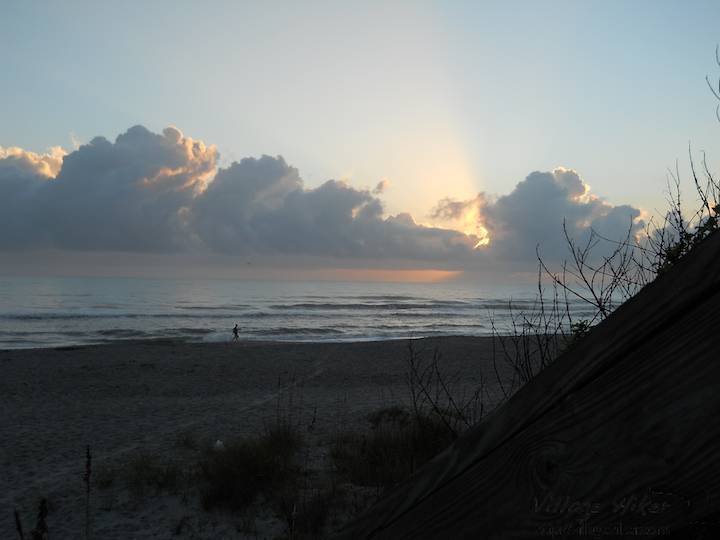
A runner treks along the beach as seen from the Avenue A dune crossing at Melbourne Beach, Florida.
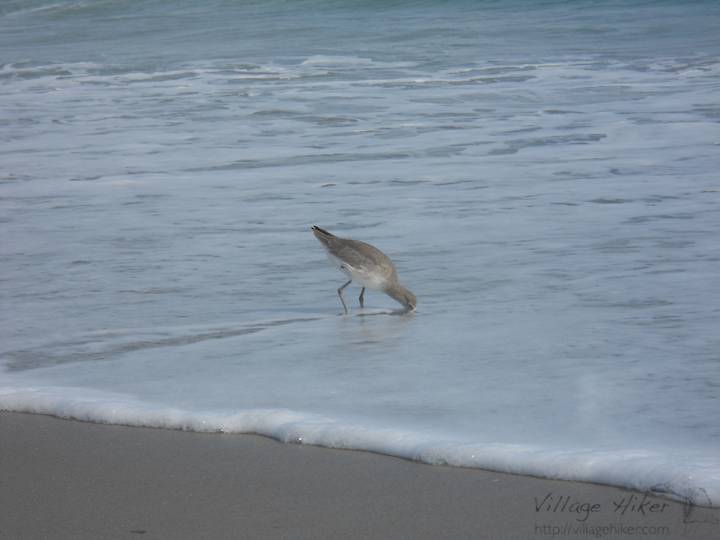
While the smaller sandpipers typically run from the incoming waves, the larger ones wade in and dig for breakfast, lunch or dinner. Here a sandpiper sticks its beak through the water to snatch a sand crab, possibly carried in by the surf. Taken 2 November 2010 at 10 am at Melbourne Beach Florida.
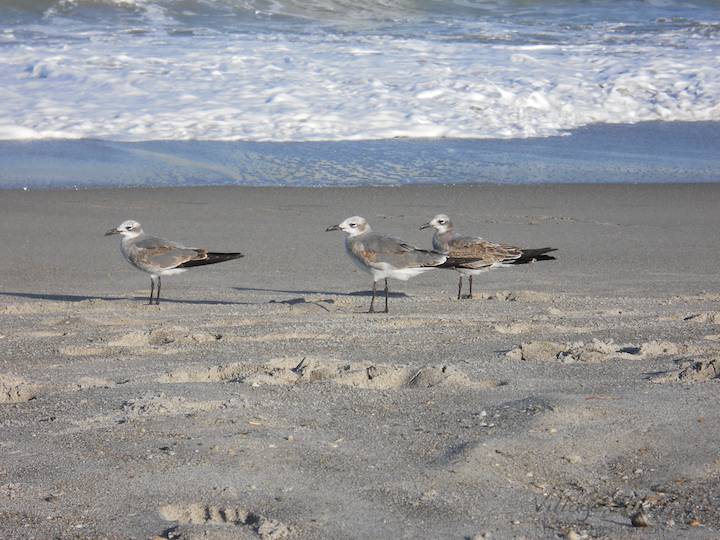
Three sandpipers wait for a photographer to leave their turf so they can return to the surf for an afternoon snack of sand crabs. Some sandpipers allow slow moving people to come within feet before flapping a few meters off. They seldom fly far.
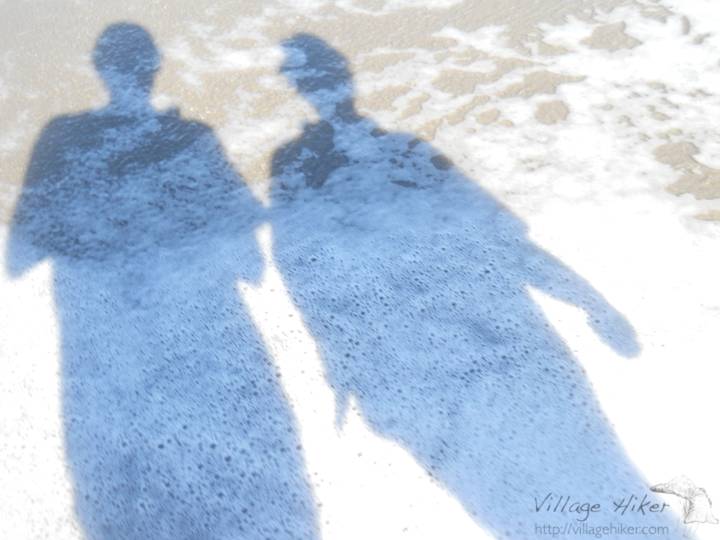
Like dust in the wind, the foam rolls in from the Atlantic Ocean, then disappears into the sand, while the shadows move on along the beach near Melbourne Beach, Florida. This far in to the surf, the water and foam remove most traces of your steps with one pass, sometimes two. While the shadows shimmer, they remain untouched.
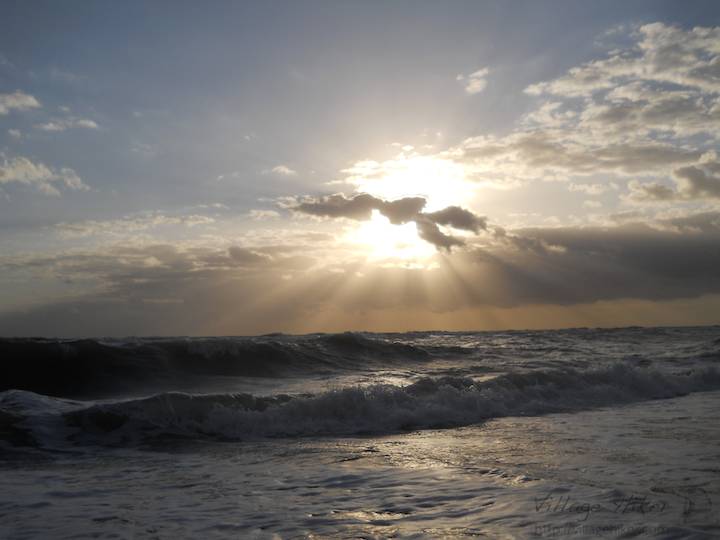
Sunlight sprays the morning sky over the Atlantic Ocean, off the coast of Melbourne Beach, Florida. The ocean sky often rewards early risers with 60 to 90 minutes of visual brilliance. When standing flat footed where sand meets waves a person 60-inches in height can see almost three miles to the slightly curved horizon.